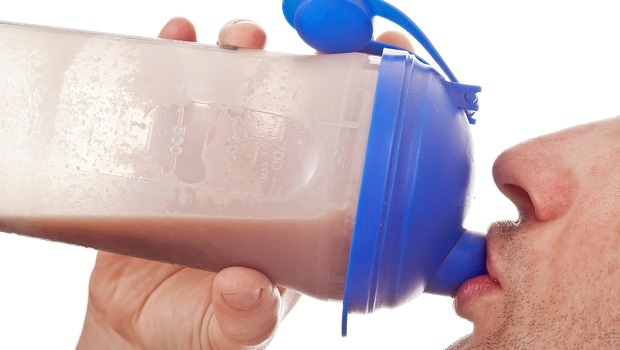Despite growth in the past five years, consumers general knowledge about protein's health benefits, especially those beyond muscle-maintenance/building, is severely lacking, representing an opportunity for protein food/beverage product manufacturers.

Protein has experienced substantial growth recently, marked by an unprecedented increase in consumers’ perceived deficiency of the nutrient, a growing awareness and usage of plant-based protein, and the resulting proliferation of protein-rich and protein-enriched products across an array of food and beverage categories. However, growth in the past 12 months is down. Despite growth in the past five years, consumers’ general knowledge about protein’s health benefits, especially those beyond muscle-maintenance/building, is severely lacking, representing an opportunity for protein food/beverage product manufacturers. In addition, shifts are being observed across categories, with some peaking and/or declining.
Natural Marketing Institute (NMI), a consultancy in consumer health and wellness, continues to monitor the pulse of the protein food and beverage market, providing a clear understanding of how consumers view the role of protein in their diet, how that view has evolved and opportunities for future growth.
The perceived need for protein
Protein furnishes the body with what it needs to maintain muscles, organs, hair, tissues, skin and enzymes among others, to keep it running efficiently and looking healthy. It also plays a role in energy/metabolism, weight loss and weight management, helping to drive fat release, lessening fat storage and increasing the body’s metabolic rate. Therefore, not only is protein necessary for everyday functions, it’s a key healthy nutrient across many need states.
Unlike some ingredients such as fiber or whole grains, which consumers may find difficult to integrate into their diet, most people get enough protein in their diet. Protein is a macronutrient so the body needs sufficient amounts to draw on when it needs more. In essence, it is important that a consumer’s diet maintains a steady influx of healthy sources of protein. There are also certain groups of consumers such as vegans, dieters, vigorous exercisers or athletes, and older consumers who may be getting insufficient amounts, due to diet choices, increased activity levels or inability to absorb protein efficiently. With all of these factors in mind, it is not surprising that an increasing percentage of consumers perceive their diet to be deficient in protein.
An increased demand for protein
The demand for protein has increased significantly over the past eight years. For example, in 2014, more than half of consumers indicated they seek out foods that are high in protein, up from 39% in 2006 and, nearly three-quarters of consumers indicated they used high-protein foods/beverages, in the past year. Of them, one-quarter indicated they’ve increased their use, during that same time period. According to Nielsen ScantrackTM, the U.S. Protein Market currently represents US$16 billion, in annual sales.
Protein: Migration from niche to mainstream
While consumption of high levels of protein has long been associated with body builders and young men, the opportunity for protein has fully expanded into the mainstream and has even migrated into infant nutrition and pet food, which have now joined nutritional products (e.g., sports/energy bars, meal replacement drinks), yogurt and snacks, as the top protein categories in terms of annual sales, according to Nielsen Scantrack.
Although the desire for protein has experienced the strongest long-term growth among Millennials and is still highest among this generation, it has broken the gender barrier, as females are now equally as likely as males to seek out foods that are high in protein. Furthermore, there are inklings of growth among older generations, perhaps due to media attention on protein targeting Boomers. Recent scientific studies reveal that as a person ages, the amount of protein needed to keep their internal systems working properly is greater than at younger ages. This research has helped bolster the desire for protein among older generations, further helping it to gain mainstream status as a “must have" ingredient and thereby spurring new U.S. product launches.
Shift in usage of protein types
Non-animal sources of protein are very popular as consumers look to rebalance their diet with more plant-based options. Plant-based diets have been shown to lower cholesterol, lower blood pressure, balance blood sugar, lower cancer risk and assist with weight loss. They are not necessarily the strict vegan-type of diet, but a moderate diet of more fruits and vegetables with some lean meats and fish. Plant-based protein products are a manifestation of this departure from animal products.
Interestingly, in 2014, consumer awareness of plant protein (e.g., pea, garbanzo and lentil) and soy protein was much higher than awareness of the “original" protein source, whey protein (animal-based dairy) (60%, 62% and 53%, respectively). What’s more— NMI’s 2014 Health and Wellness Trends study revealed that 37% of the general population used plant protein in the past three months, while only 21% indicated they used whey protein during the same time period.
Consumers’ heavy usage of plant protein is reflective of their preference for non-animal based protein types. In 2014, half of consumers agreed plants are a better source of protein than dairy. The expansion into plant-based protein is another indication that the value of protein has emerged beyond the bodybuilding crowd and is now widely recognized and accepted by the more health-oriented mainstream consumer. Plant-based protein products will continue to provide opportunities across a range of categories to meet the needs of today’s proactive health consumer.
Perceived health benefits of protein
Consumers are increasingly looking for ways to advance their health, including weight loss, boosting immunity, increasing energy, building/maintaining muscle and healthy cells, and even improving appearance (hair, skin, nails)—all benefits of protein and all opportunities for protein-rich products.
However, despite the increased perception of protein deficiency and the increased desire for protein, many consumers still are unaware of the full spectrum of benefits of protein. While two-fifths relate protein with building muscle, significantly fewer associate protein with energy and weight management, skin health, immune support or anti-aging. One-third of consumers “don’t know" any health benefits associated with protein. Increasing education around the benefits will help to expand the protein opportunity beyond muscle building and into the realm of health promotion, disease prevention and anti-aging.
Lack of benefit knowledge may be a reason for declining market growth. Are we reaching maturation as market growth slows? From 2010 through 2014, market growth averaged 11 percent, but the past 52 weeks ending with the first quarter 2015, growth was only 3%. Categories are in various stages of the “protein life cycle." For example, over the previous year, nutritional bars are up 5 percent, cat food is up 4%, wholesome snacks are up 25%, but yogurt is at best stable or declining at -1%, and dog food at -2.5%, according to Nielsen Scantrack.
The desire for high-protein foods and beverages has mainstreamed over the past decade for many reasons, including an increase in consumers’ perceived deficiency of the nutrient and expanded sources of protein. What’s next may include repositioning protein products to new need states and consumer groups with new value-added claims, new formats and combinations, and innovative processing. Certainly, consumer education will play a key role.
About the Author(s)
You May Also Like






.png?width=800&auto=webp&quality=80&disable=upscale)